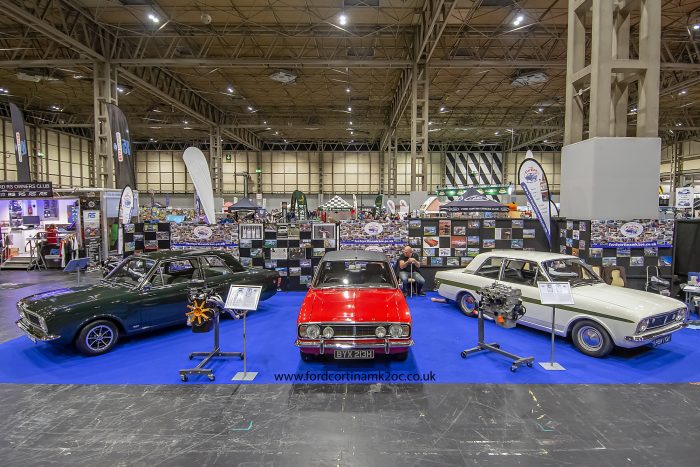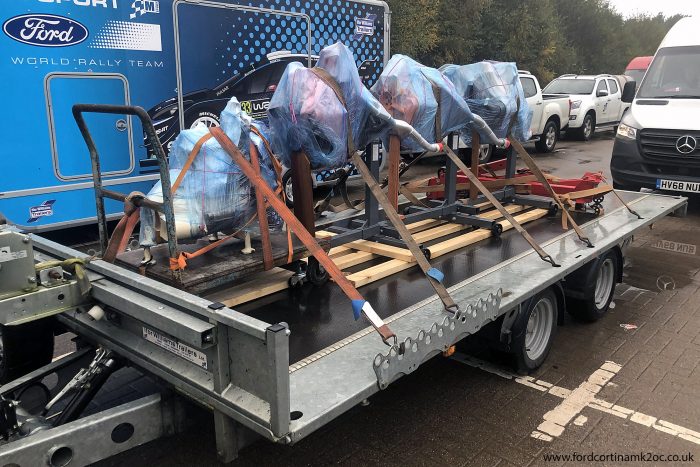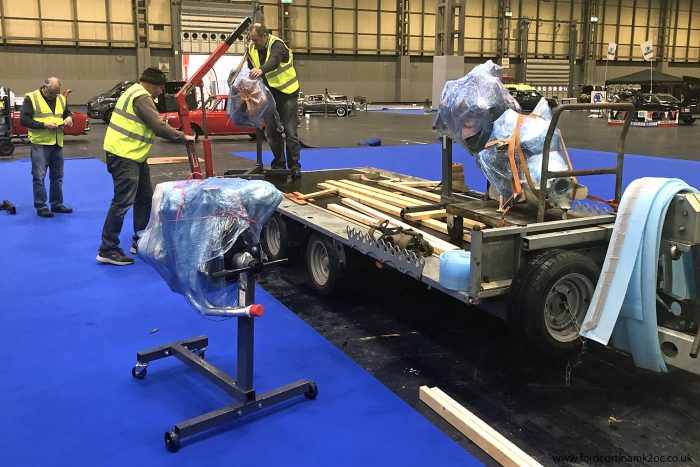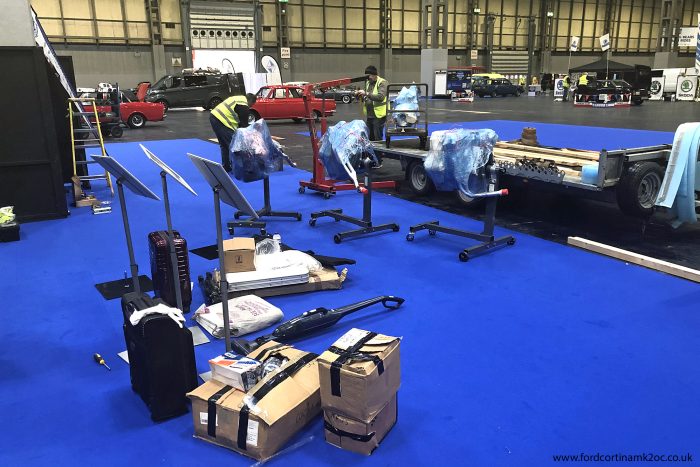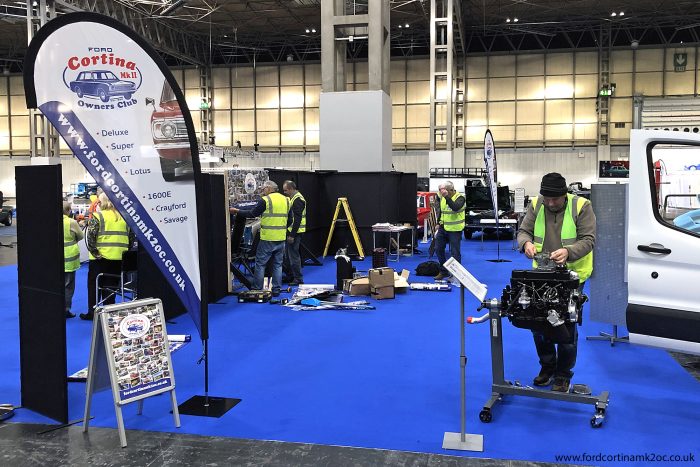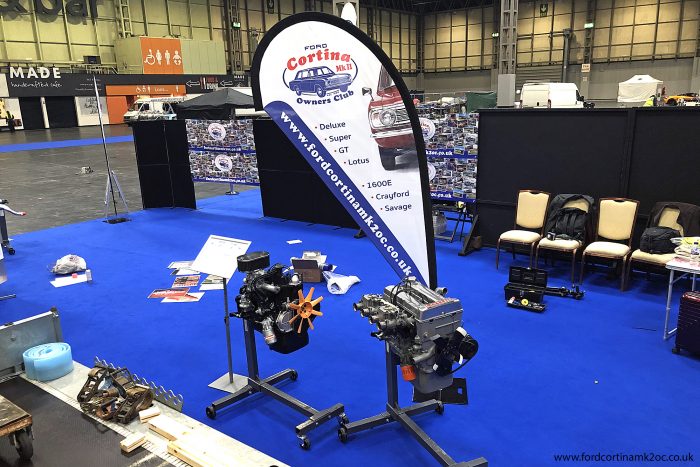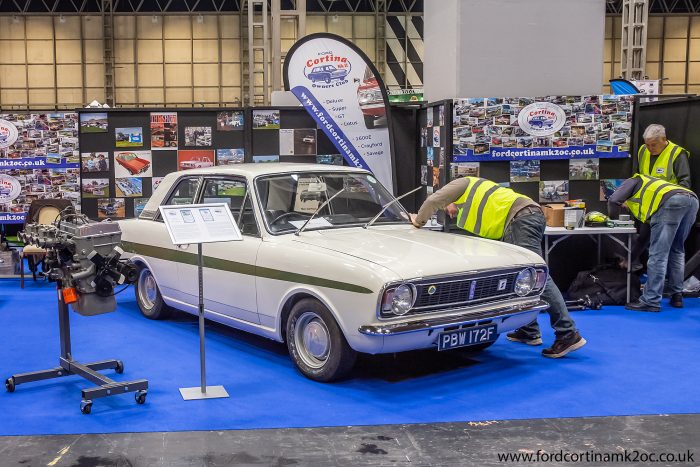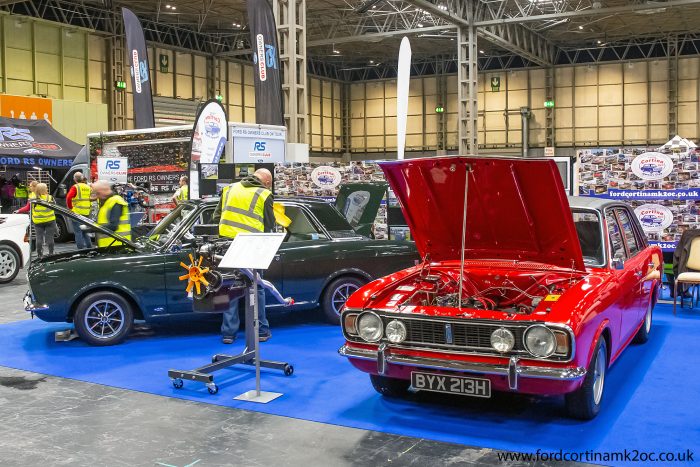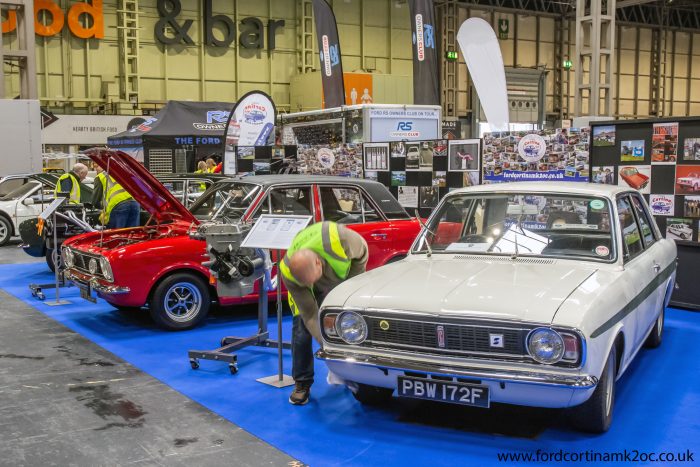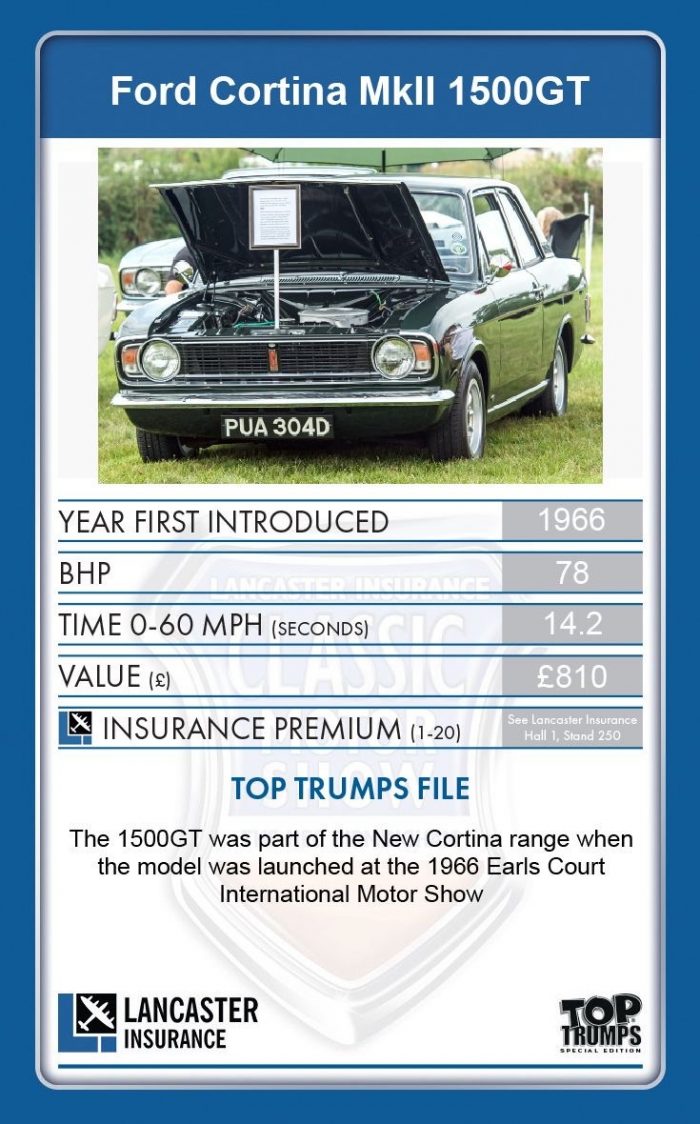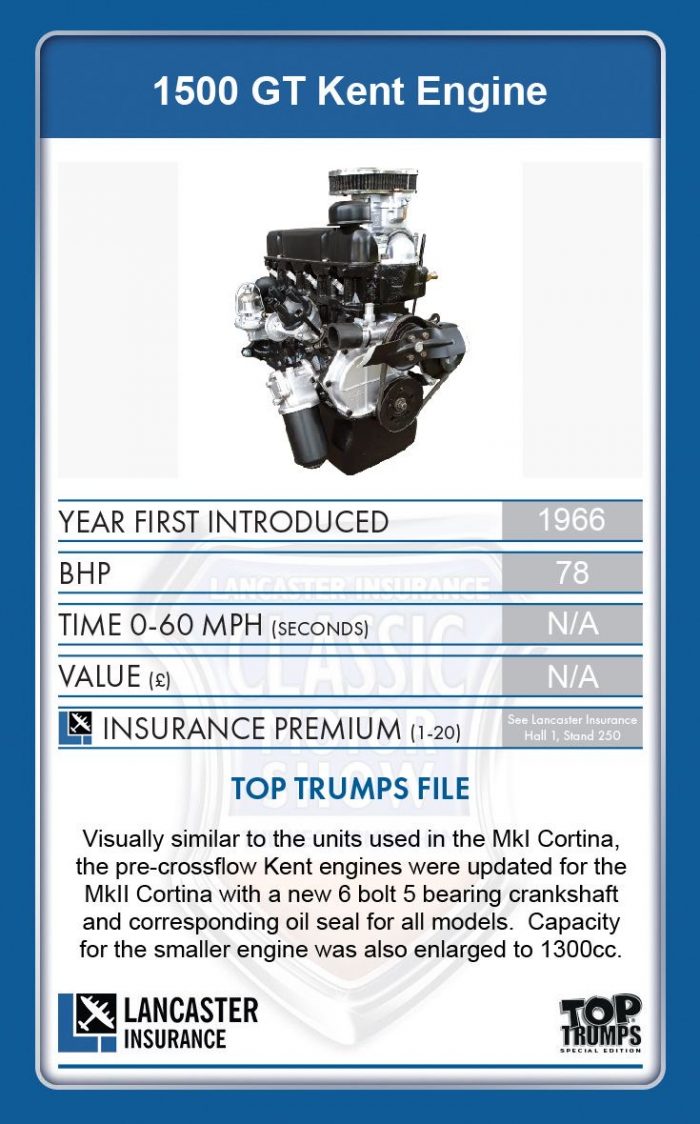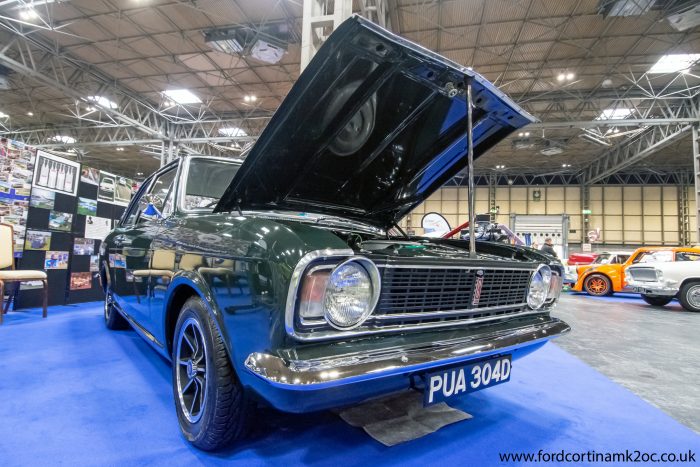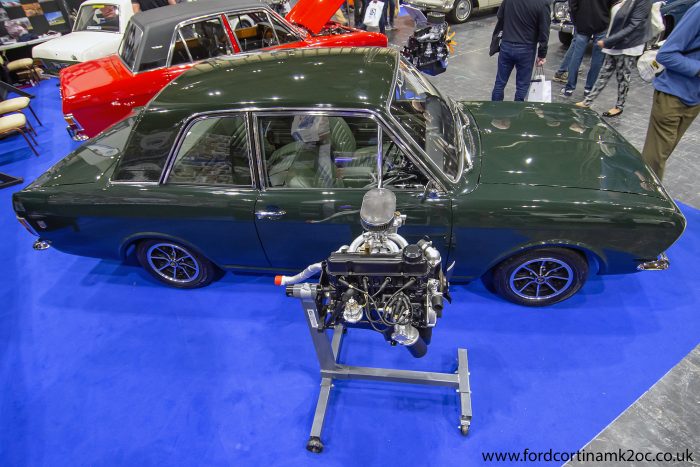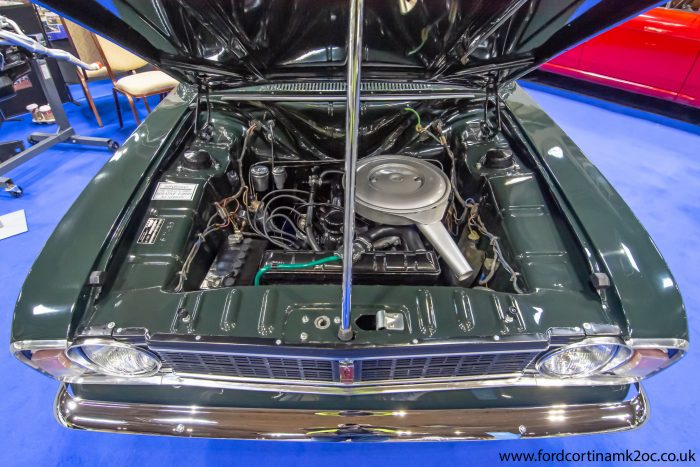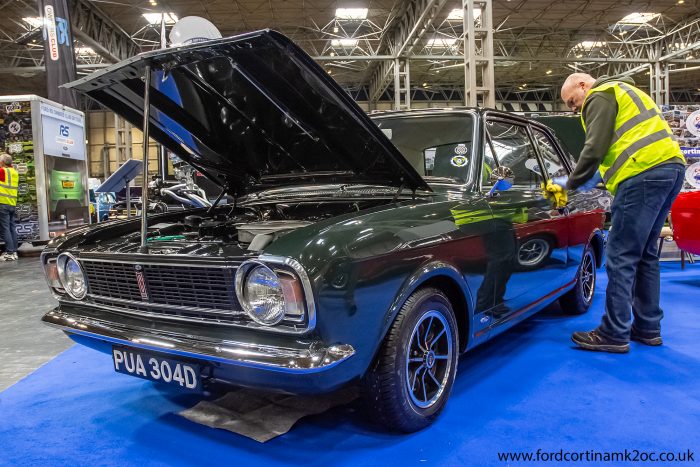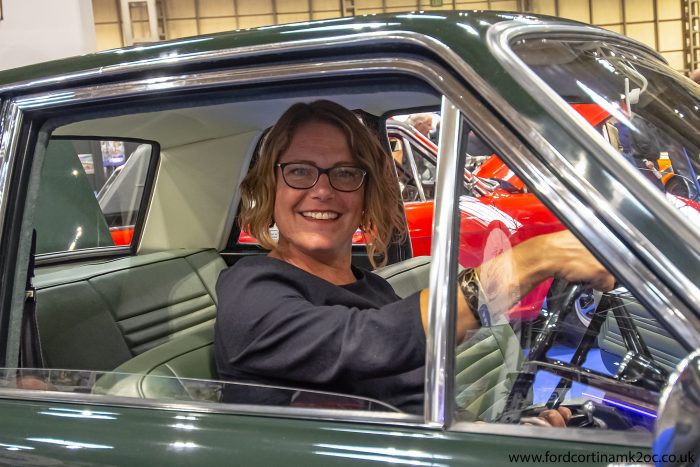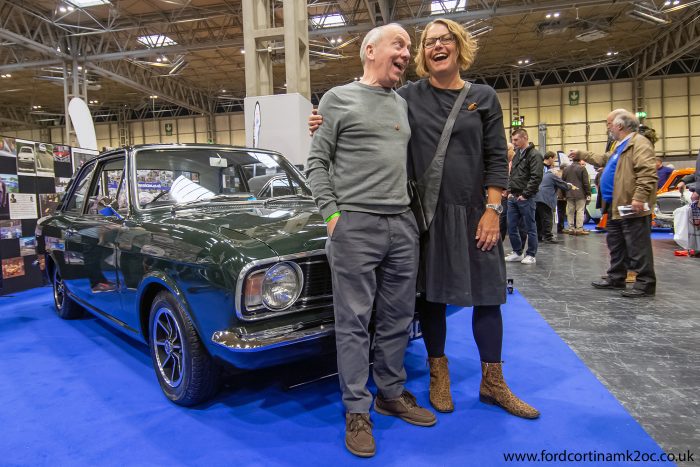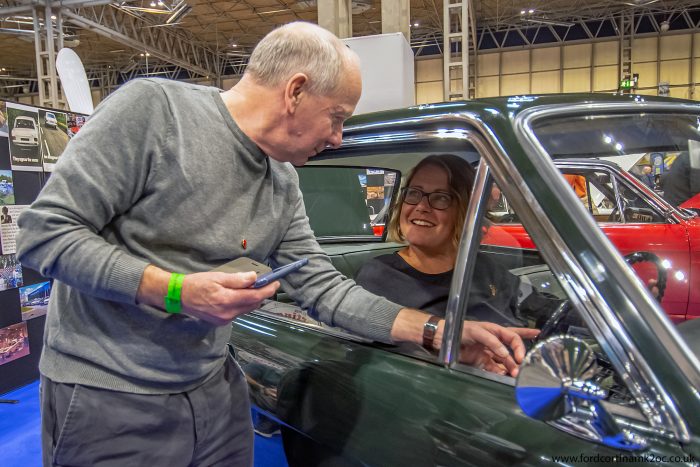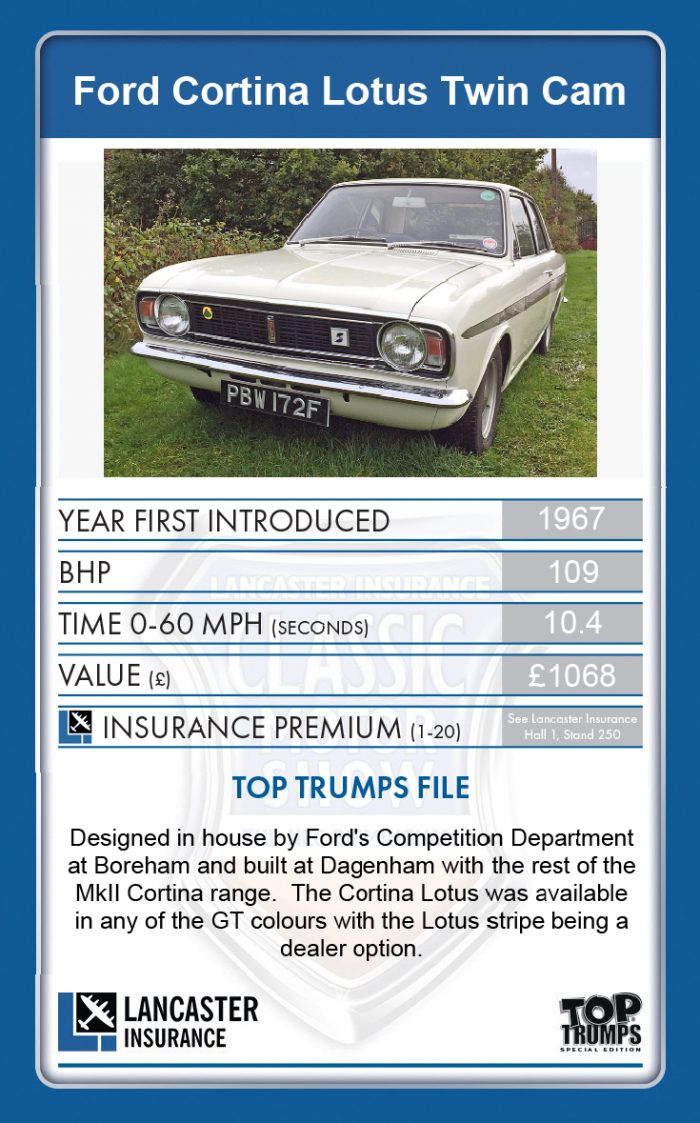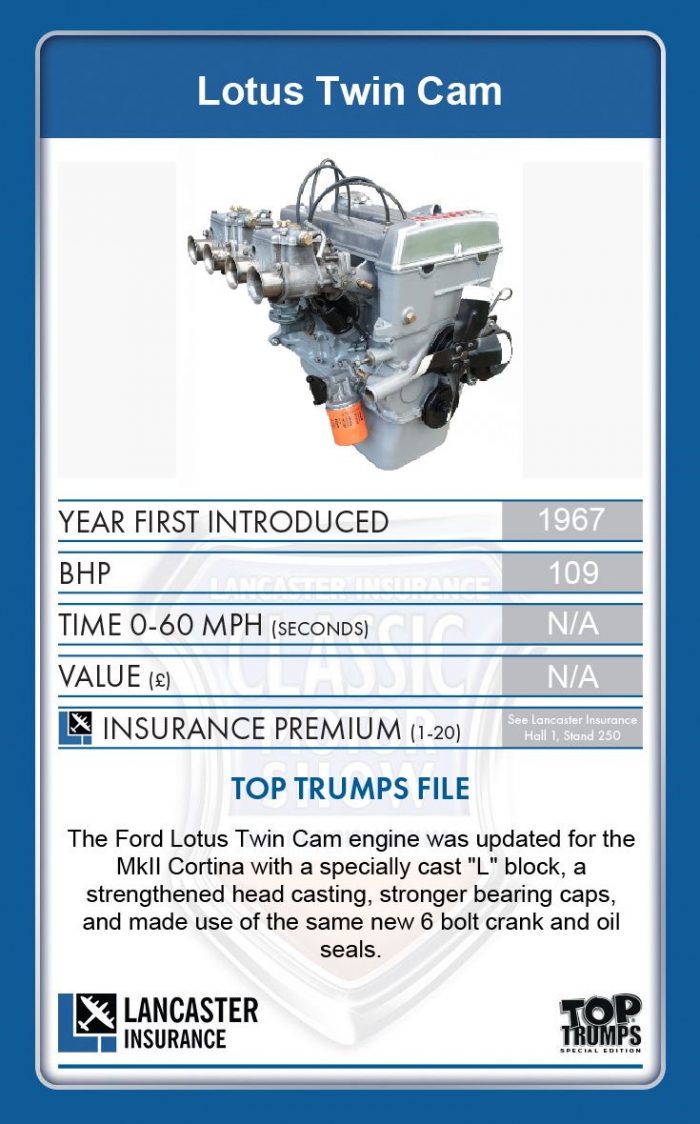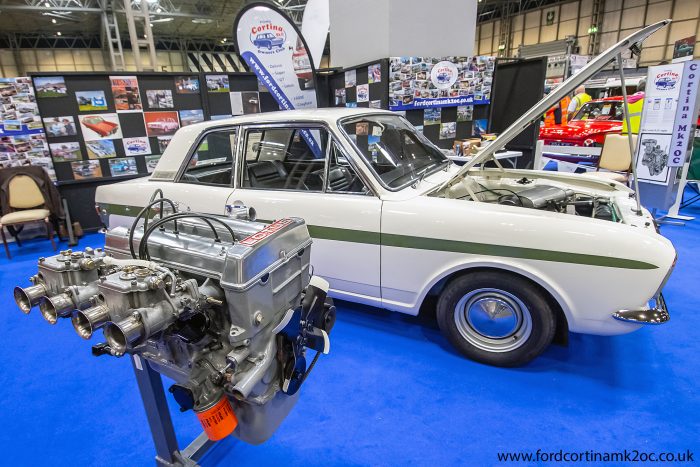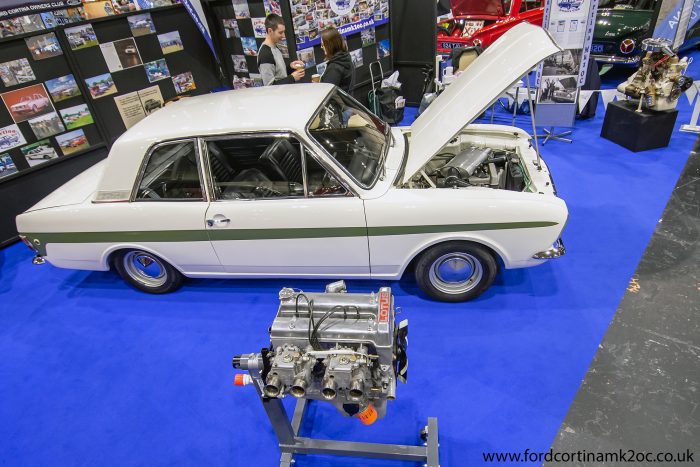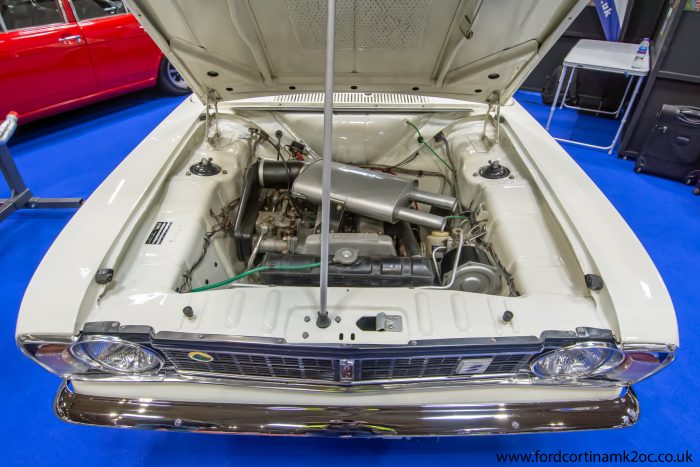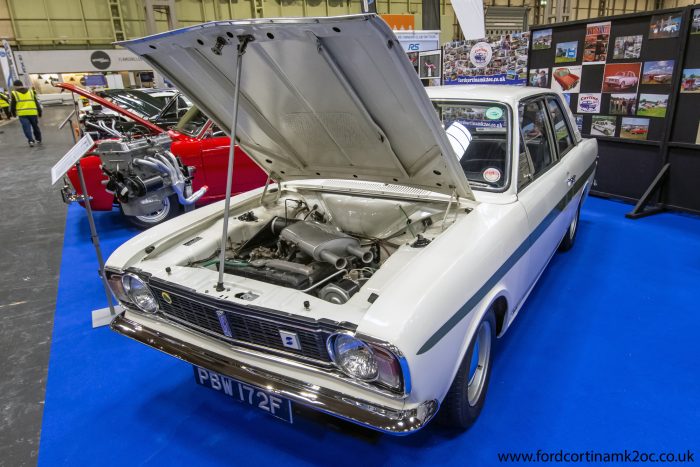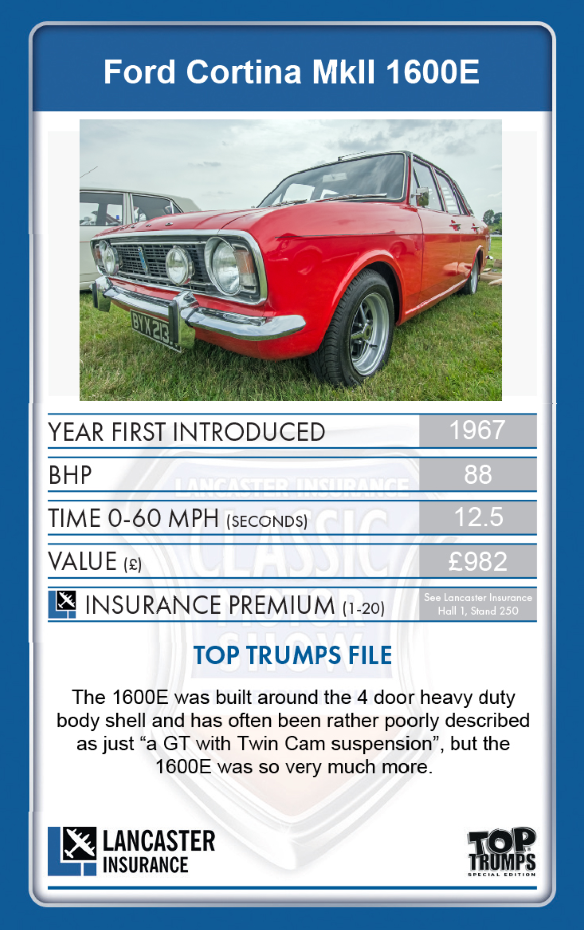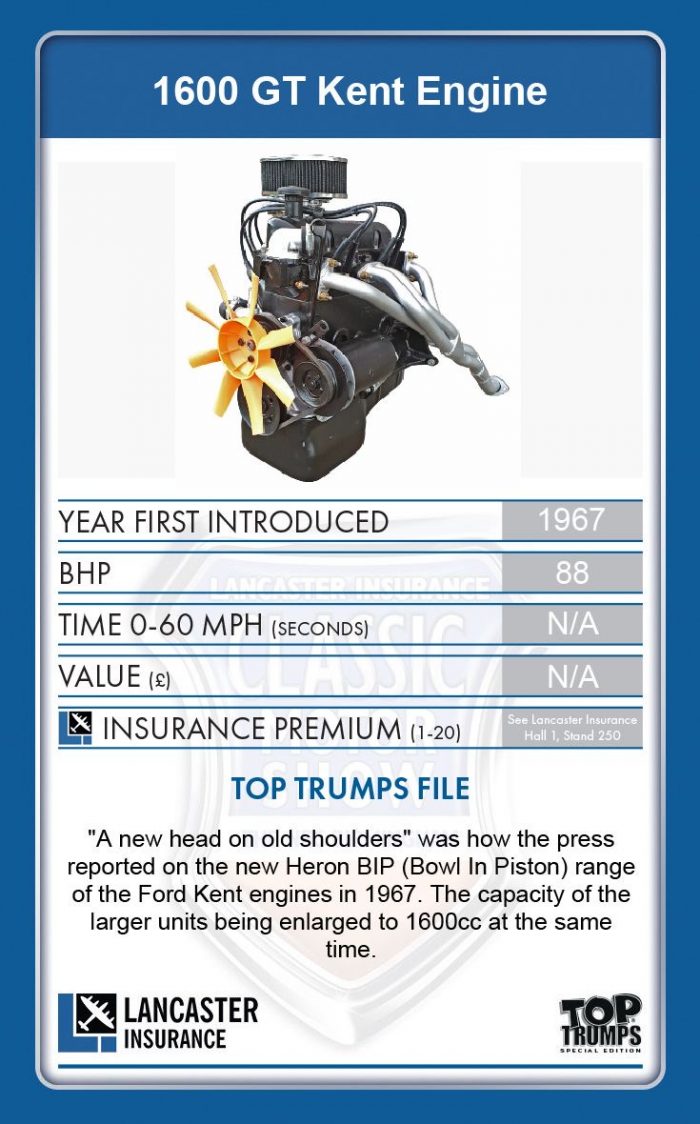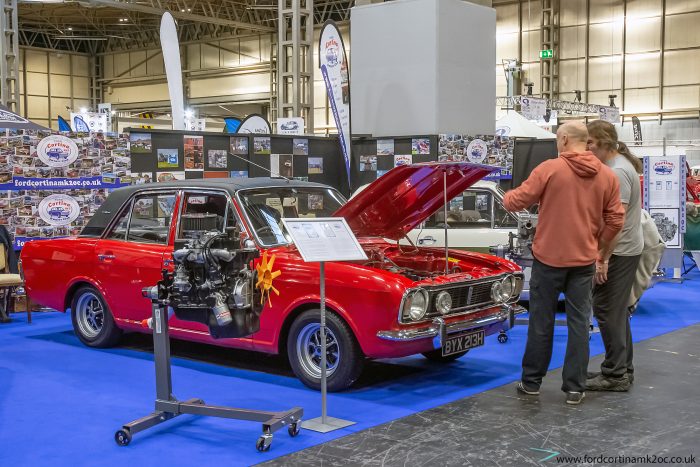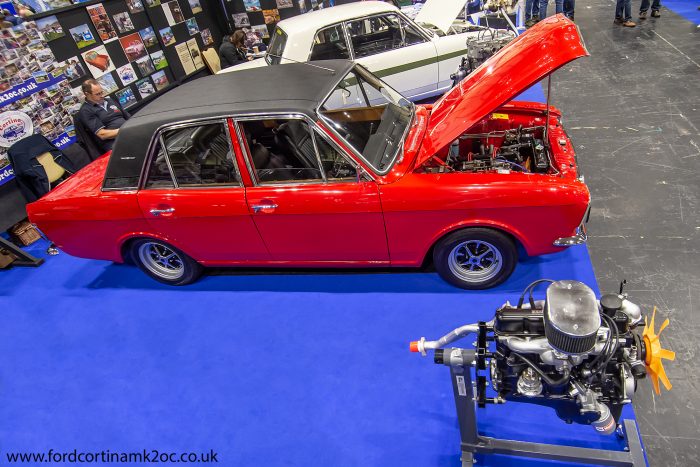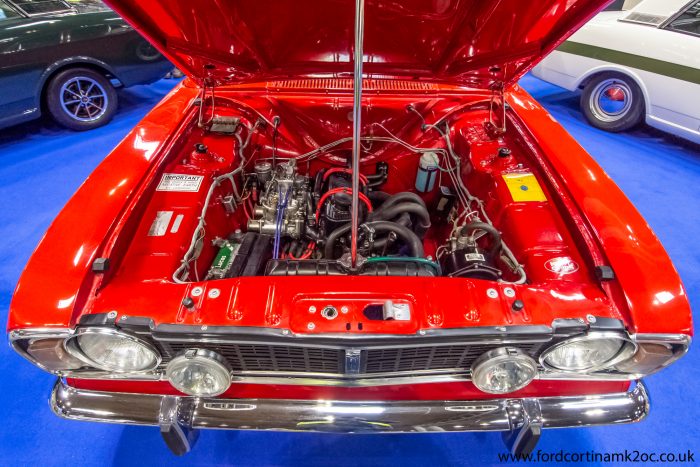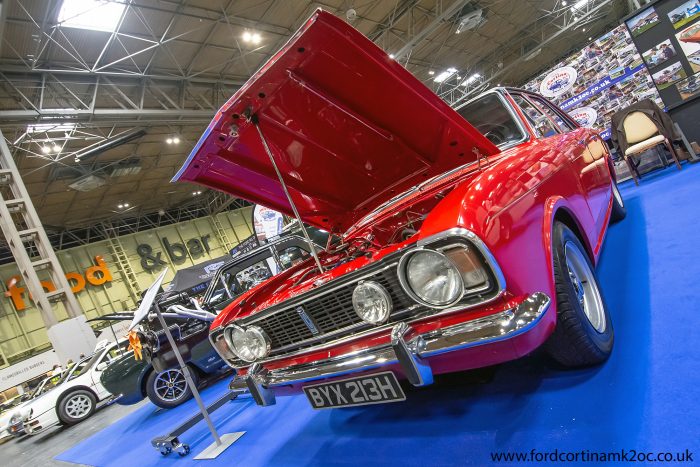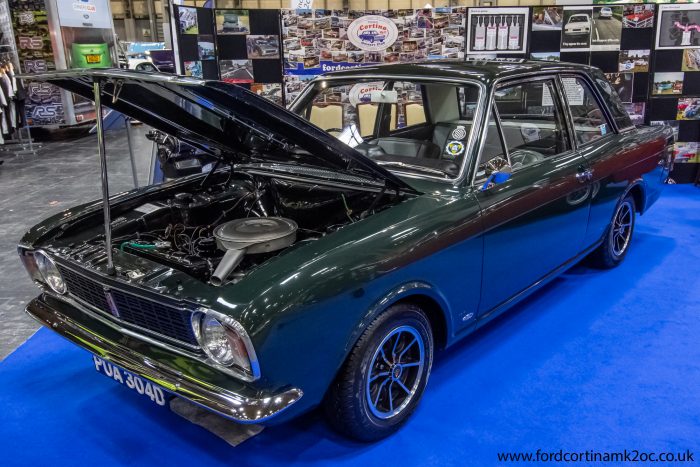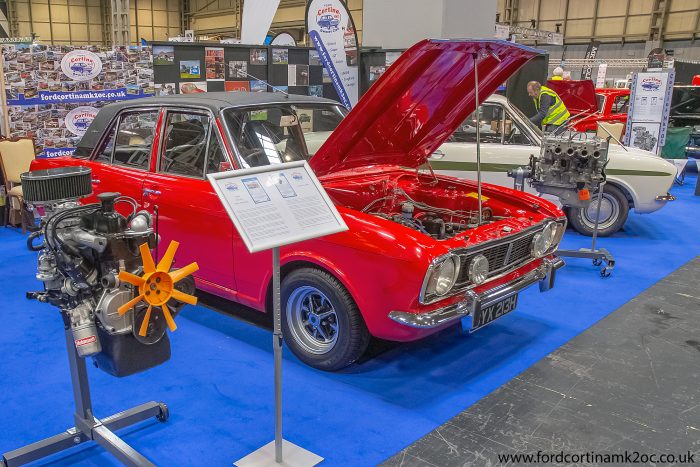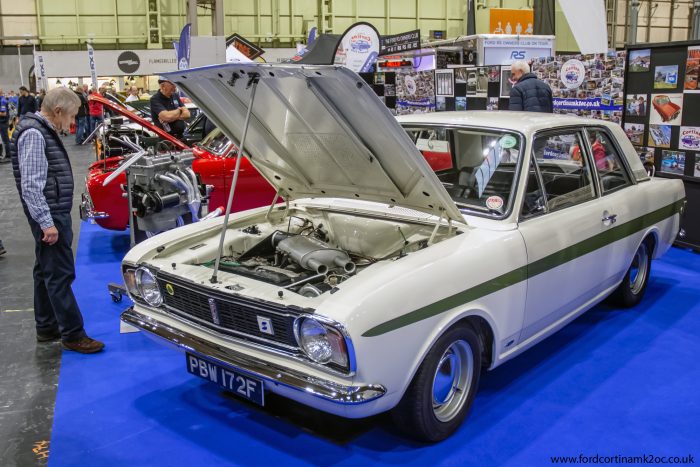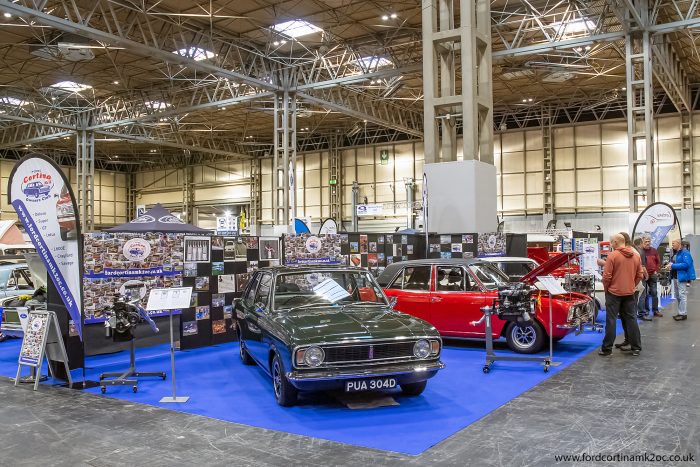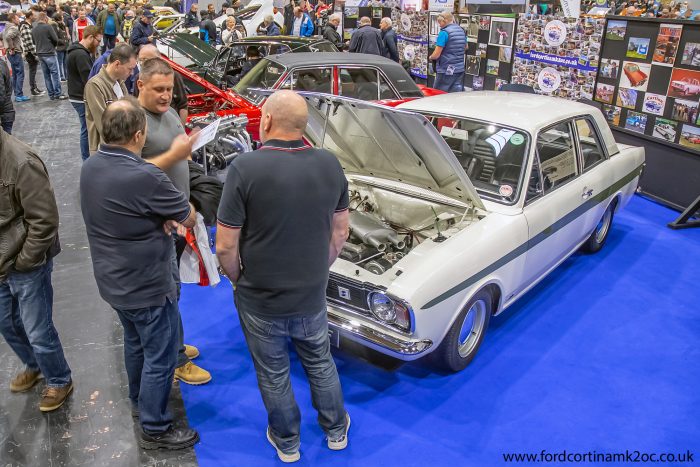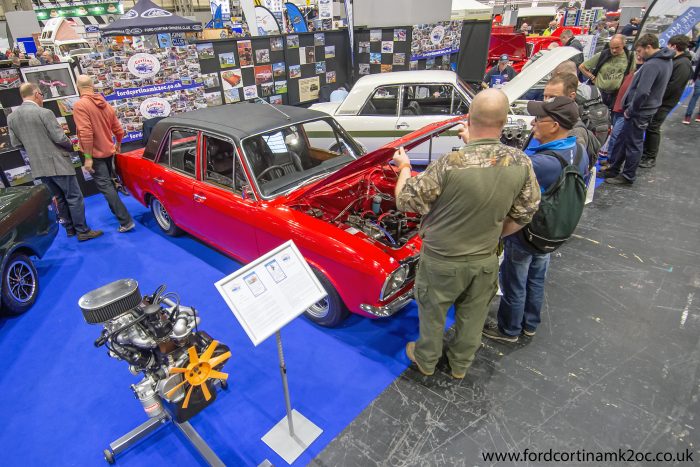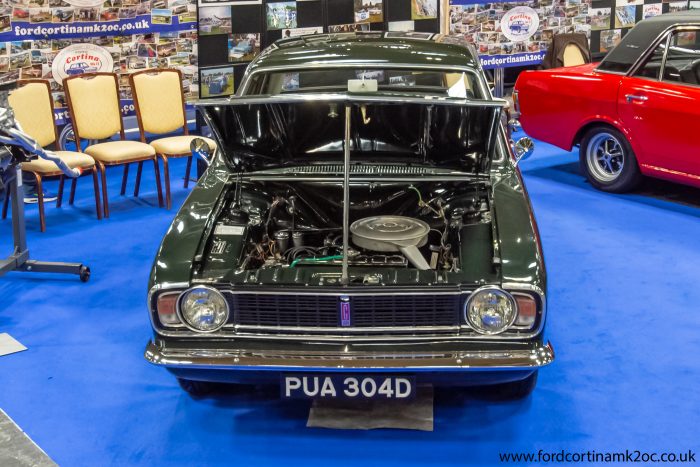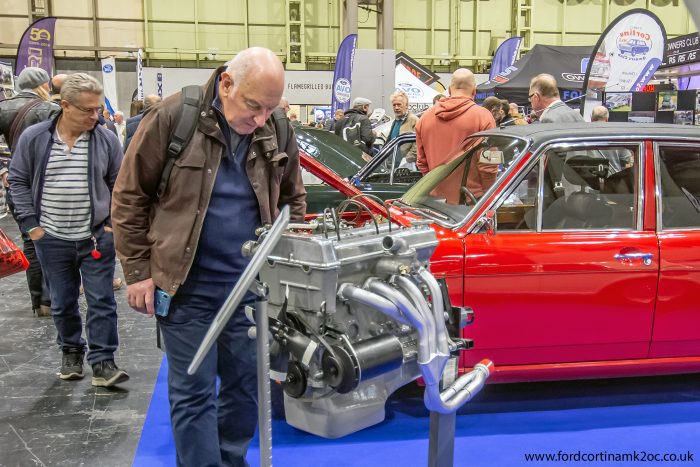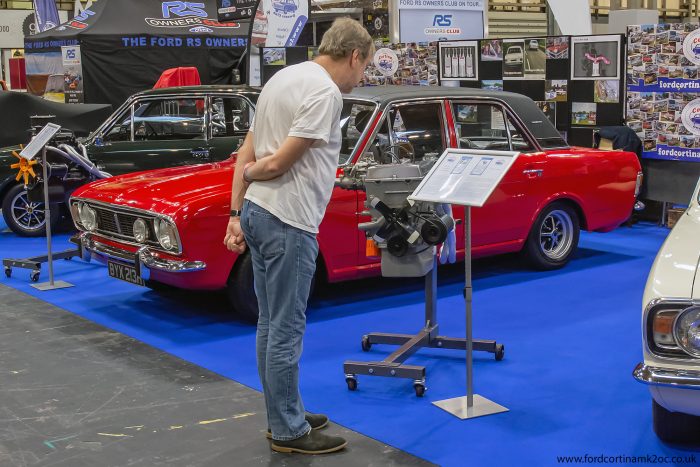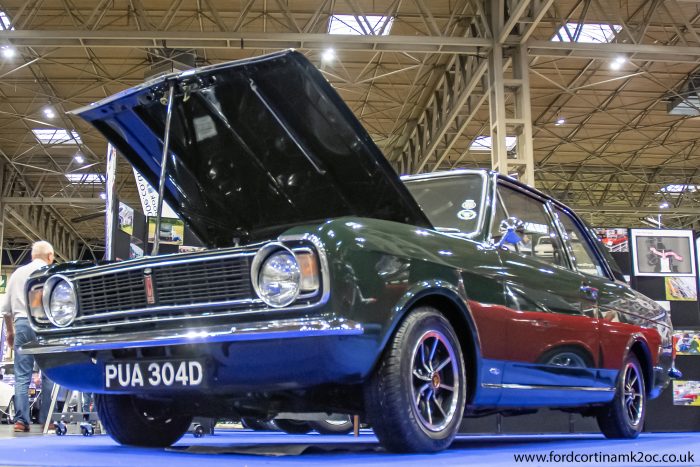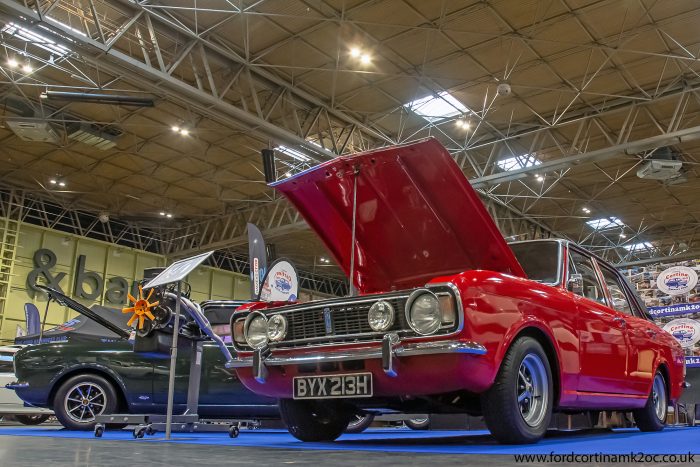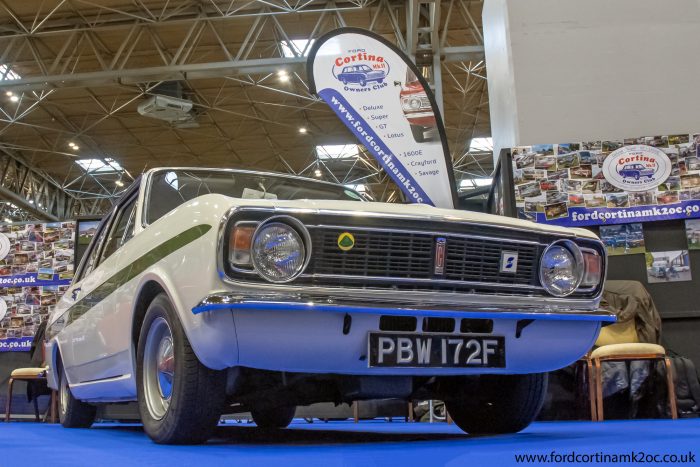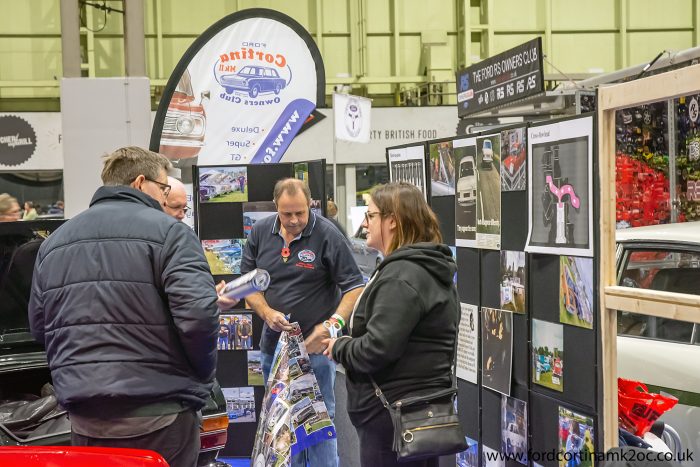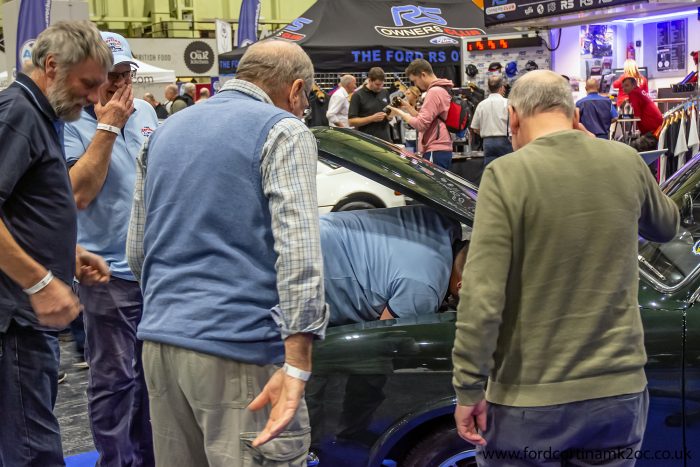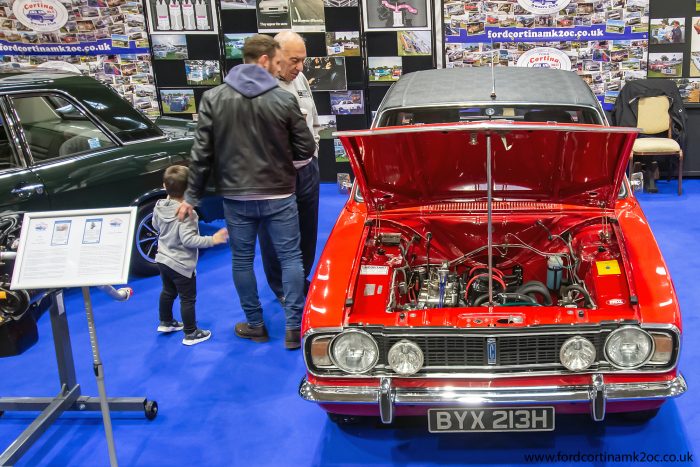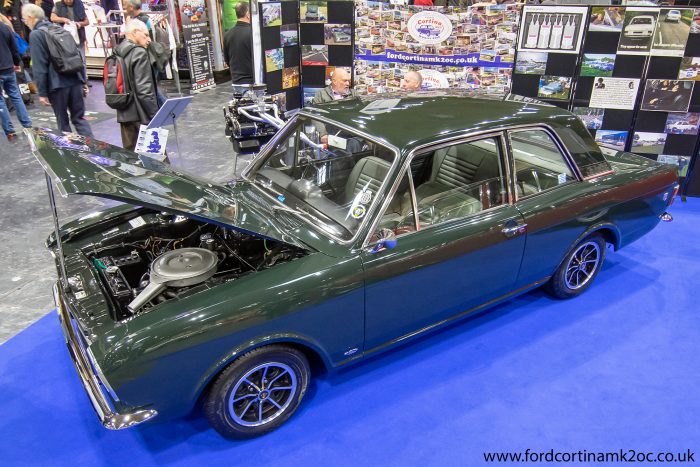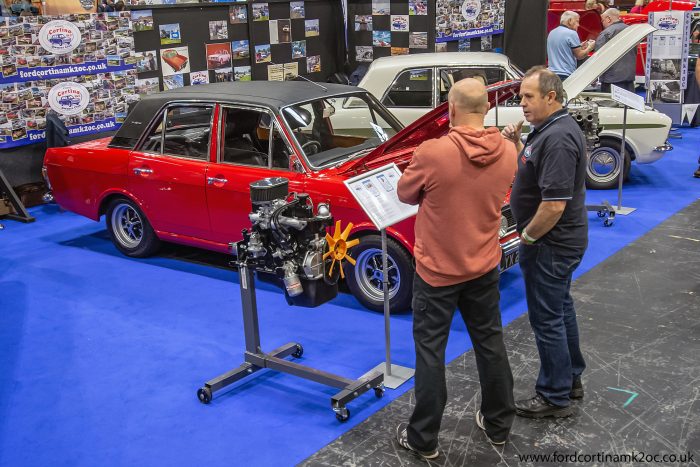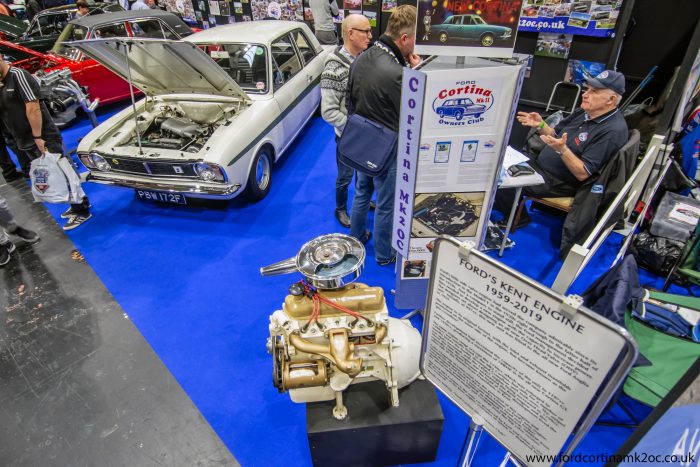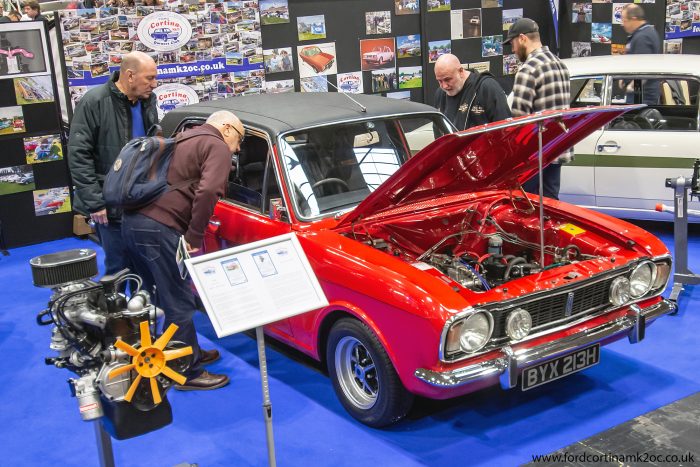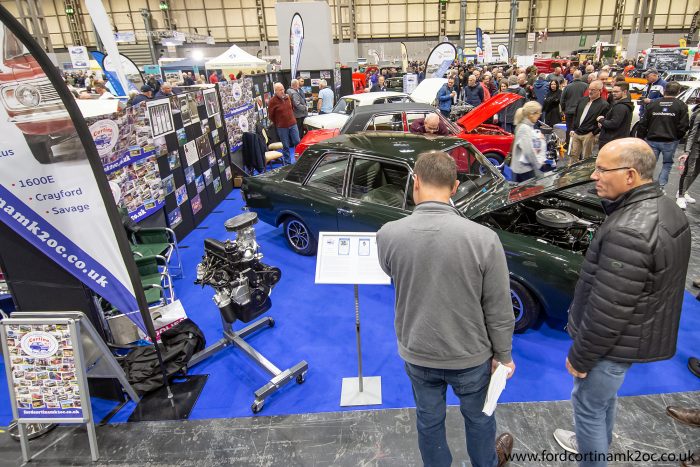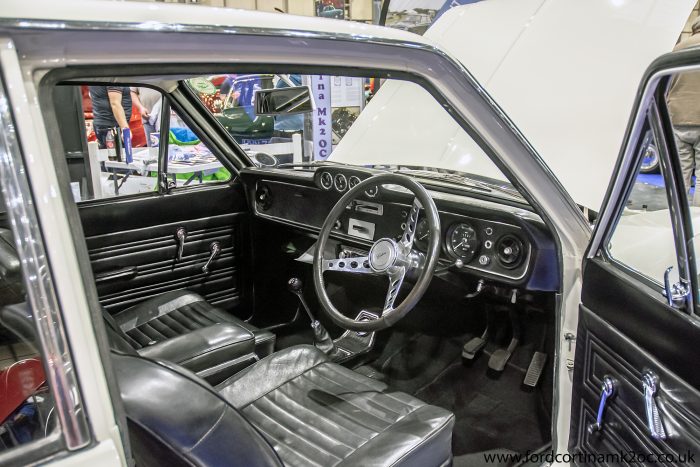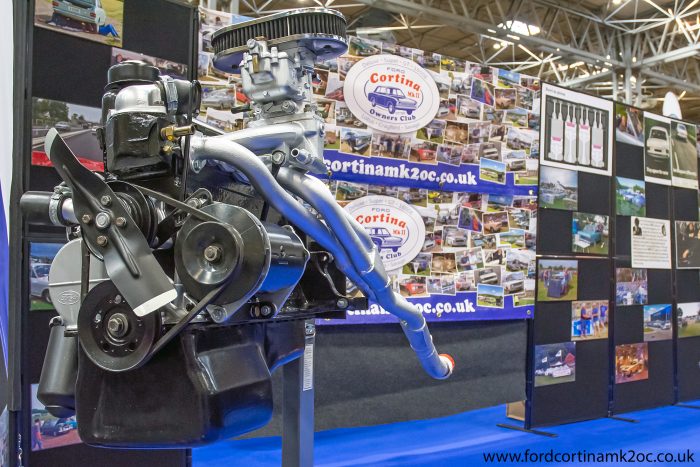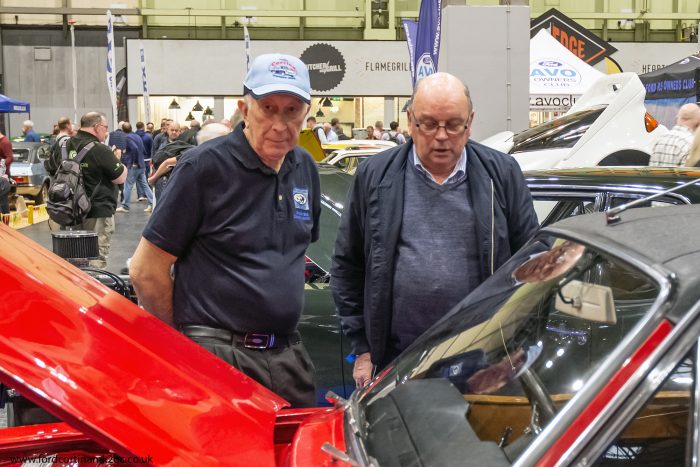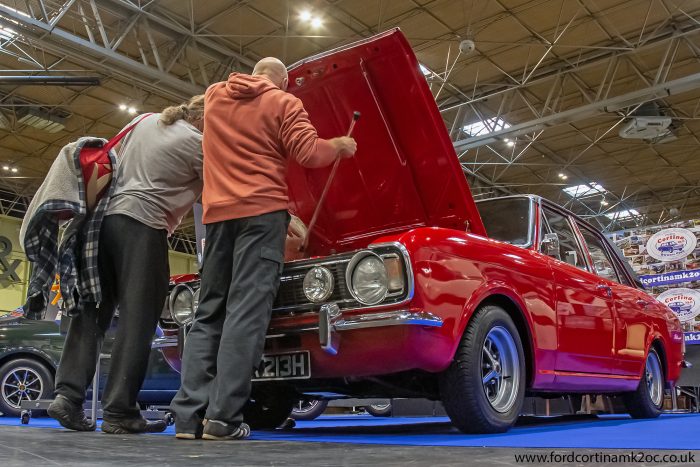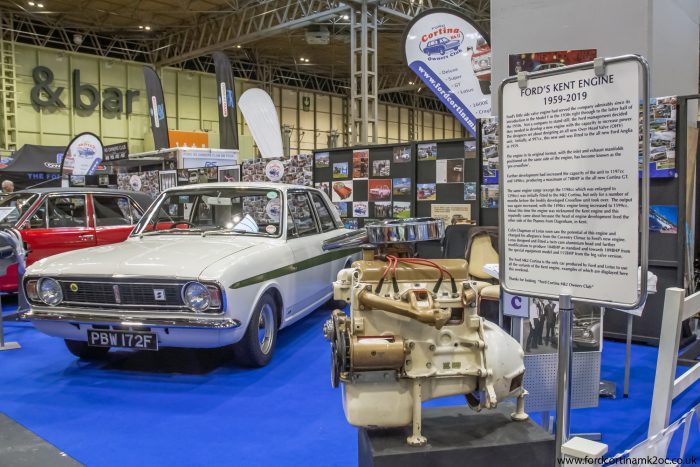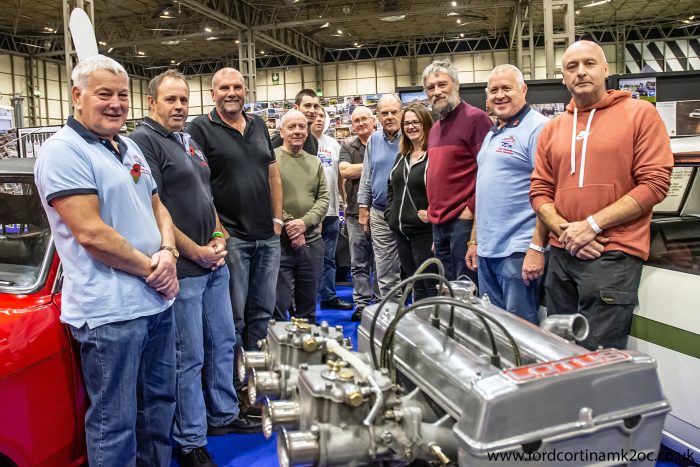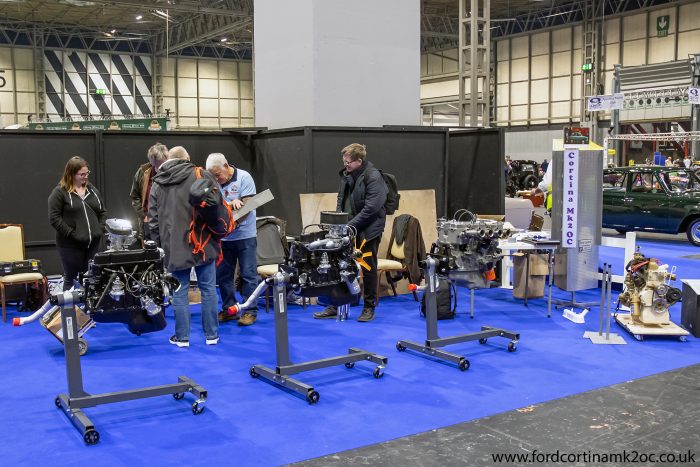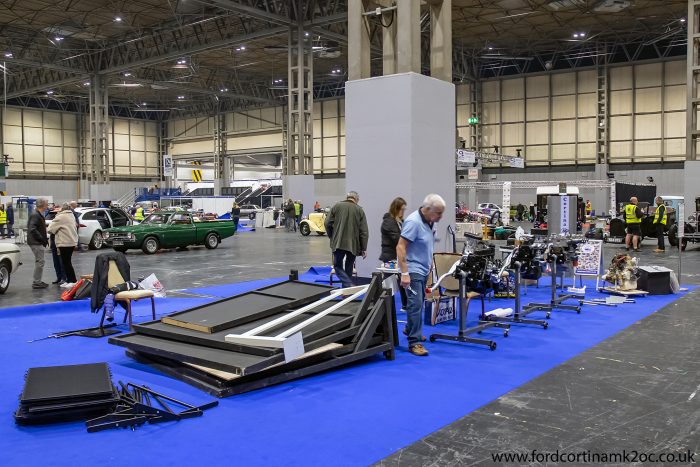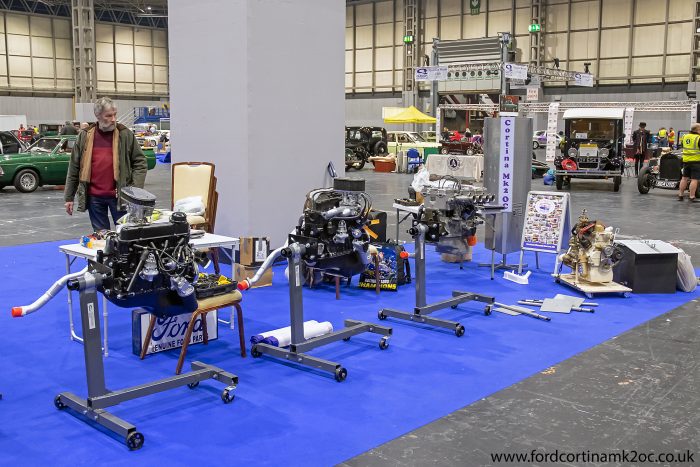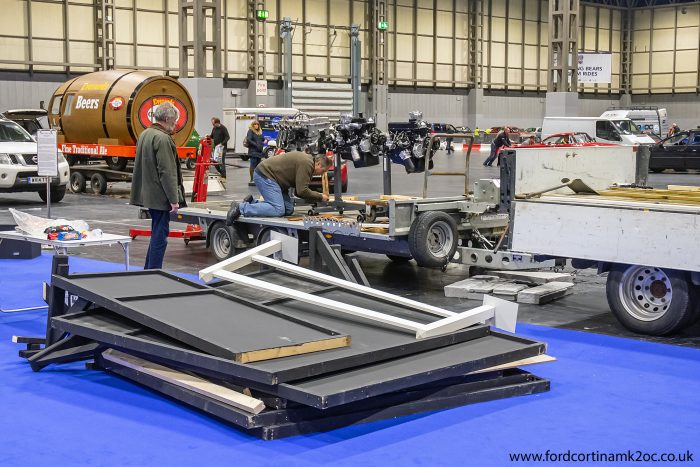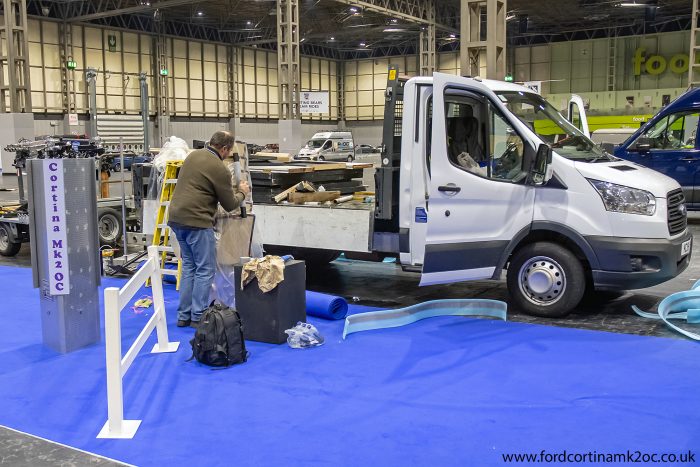Lancaster Insurance Classic Motor Show
Owner – Dave Marson
After getting an offer for the Savage he couldn’t refuse Dave was on the lookout for another project to compliment another 1600E, a very original series II car in Blue Mink that he bought from a close family friend some 10 years before. The search led him to this alpina green GT, one of the very earliest MkIIs produced. The VIN plate shows it having a November 1966 build date, manufactured just a few weeks after the model was launched at the International Motor Show at Earls Court in London on 18th October.
The first owner was Mr James Eardley who bought the car new in Singapore while working there as a RAF civilian. In January 1970 he retired back to the UK and brought the GT home with him where it was given the registration number UKD 672H, it was the 4th owner that later got it re-registered with an age related number plate in April 2005. James kept the Cortina until his passing in 1992 when his great niece Claire took it on. We’ve been delighted to reunite Claire with the car this weekend here at the NEC.
The GT was basically a good car that needed tidying up when Dave bought it in March 2016. The work carried out since includes a full body, engine bay and boot area re-spray in its original colour. The interior has received a full re-trim in its original Forest Green upholstery, new Fir Green carpets fitted and the plastic dash components have been re-chromed. Dave has also finely detailed the engine bay to original specification with all ancillaries refurbished to as new condition.
The first development came in May 1961 when the capacity was enlarged to 1340cc for the introduction of the Classic and Capri range. In 1962 a 1498cc engine with 59.5 BHP was added to the range which added a 5 bearing crankshaft to the Kent engine for the first time. All engines kept the same 80.96mm bore size, the different capacities achieved by varying piston travel distances by using taller engine blocks with crankshafts and connecting rods to suit.
Ford launched a completely new model range together with another new version of the engine at the Earls Court Motor Show in September 1962, the 113E Cortina. This featured a 48.5 BHP 1198cc unit which made use of the 3 bearing crankshaft. The Cortina wouldn’t get the 1489cc engine until January 1963 with the Cosworth designed 78 BHP GT arriving a few months later in April that year.
The final developments for the first generation “pre-crossflow” came when the MkII Cortina arrived in October 1966. The smaller capacity 1198cc engine was expanded to 1297cc to give 53.5 BHP with all units then featuring a new upgraded 5 bearing crankshaft. This had been updated with new rubber oil seals, a bigger spigot bearing and a 6 bolt fixing for the flywheel.
Owner – Andy Goode
Fast forward to 1997 and Andy was now driving around in a MkI Cortina GT. He got talking cars with a work colleague who happened to mention a friend of his had a MkII Lotus Twin Cam for sale for £2000. Andy was straight round there to have a look and found that very same car he’d seen 10 years earlier still sitting in the same place and still in the same unfinished state. Nothing more had been done with it and with so many missing parts still to find Andy made an offer of £1500. This was too far from the asking price for the seller so Andy left his number and walked away.
Six months later the phone rang and Andy was told the seller had passed away and the car had to go. He sold the MkI GT for £800 and borrowed the extra money and finally the car was his. Andy spent the next three years restoring it, finding all the correct parts and getting the engine rebuilt. After finding white paint under the rear parcel shelf, and assuming it couldn’t have been black from the factory, he had it repainted in the classic white and green Lotus colour – but Andy later found out it had indeed been black from new – investigations revealed that it was a special order car for Thames Valley Police where it was based at Banbury serving as an unmarked patrol car.
Andy is currently restoring another MkII Twin Cam that has been off the road since 1979, which also happens to have been supplied to Thames Valley Police when new.
The initial idea for the new engine was laid out by Harry Munday (then technical editor of Autocar, but previously the chief designer at Coventry Climax). Richard Ansdale and Steve Sanville then spent the summer of 1961 turning these plans into a more detailed design which were then further developed by Keith Duckworth. Early test engines produced only 85-90 BHP and suffered a series of head gasket failures, broken cam followers and a broken crankshaft.
It wasn’t until August 1962 when a 1498cc Twin Cam engine was fitted to a Cortina, but only with the help of a hacksaw – the inlet tracts were found to be too long for the Webber Carburettors to clear the inner wings. Another 1 ½ inches were later removed to allow room for the air filter. The inlets were bolted at this time, only becoming an integral part of the casting for full production units.
The “Ford Consul Cortina developed by Lotus” was announced as a homologation special at the Racing Car show in January 1963 featuring a 105 BPH 1558cc engine, “A frame” rear suspension and light weight body panels. The MkI Lotus Cortina quickly became great success selling over 3300 units and taking countless race and rally wins before it was replaced by the MkII Cortina Lotus in March 1967. Later known as the Cortina Twin Cam, this used an updated version of the 109 BHP SE spec engine and would go on to make 4032 sales.
Owner – Mark Rossa
He spotted this particular for sale on eBay in 2003. It was a full on project car but that didn’t worry Mark too much. He got bidding and won the auction for £400. The next four years were spent collecting parts before he could start what turned out to be a major rebuild that would take him many hours of work over the following six years.
A complete body restoration was needed thanks to the tin worm having attacked in all the usual places MkII Cortinas rust. Mark welded on many replacement panels to the car, up front were new wings, a new valance, and a pair of new headlamp panels. Further back, new floors were needed as were many chassis sections and a pair of rear wheel arch repair panels too. He painted the car at home too, with a change of colour to Radiant Red. With a new vinyl roof the shell was finished and Mark moved onto the oily bits.
Mechanically, pretty much everything needed attention, with Mark having both the axle and gearbox completely overhauled. The engine is a tuned later 711m crossflow with an overbore to 1660cc and a Piper 285 camshaft. It’s running on twin Webber DCOE 40 carburettors and electronic ignition and has a big bore exhaust fitted.
Finding parts for the interior proved quite a challenge, particularly the driver’s seat base, but Mark solved this one when he discovered a passenger one would fit. A new black headlining was fitted along with handbrake and gearstick gaiters made in leather.
You may think all this would have been enough work for anyone, but Mark really does have the MkII Cortina bug and he’s already well into the restoration of the next one, and yes, its another 1600E.
Known as the Crossflow due to the inlet manifold moving to the opposite side of the engine to the exhaust, it also featured the Heron “Bowl in Piston” where the combustion chamber (mostly) moved from the head into the piston crown. The common 80.96mm cylinder bore remained however.
There were 3 engines available initially, a 57 BHP 1298cc (1300) that was fitted to the Deluxe model MkII Cortinas, a 71 BHP 1599cc (1600) which replaced the 1498cc engine in the Supers, and then there was the uprated 1599cc (1600) GT which took the place of the previous 1498 GT version but still used the same Cosworth designed cam. In 1968, the arrival of the Escort saw a 48 BHP 1098cc (1100) added to the range. This used the same block as the 1300 but with a shorter stroke through using different crankshaft and connecting rods. Due to local taxation reasons the 1100 engine was fitted in MkII Cortina models for certain export markets making for a very under powered and inefficient car indeed.
Mid 1970 saw the introduction of the 711M, a development of the Kent series of engines that included a heavier, thicker cast block, wider cam lobes matched with larger diameter followers, and metric size fixings. This would stay in production right up to the XR2 in 1982, though a heavily adapted version would later feature in the first Ka.
Ford puts an educated guess of the total production of Kent engines at “somewhere approaching 10 million”.


